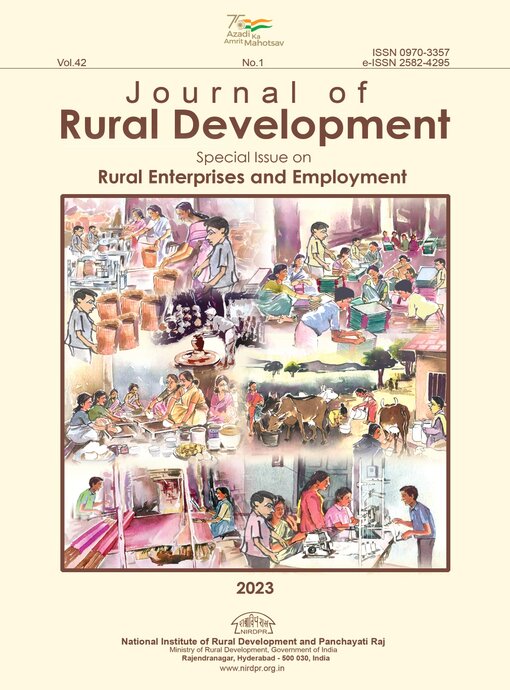Measuring Women Self-Help Groups and Their Enterprises Sustainability in Odisha
DOI:
https://doi.org/10.25175/jrd/2023/v42/i1/172892Keywords:
WSHGs, Mission Shakti, Nurturing, Managerial Sustainability Index.Abstract
The SHG programme has successfully transformed the lives of rural and urban poor by providing financial and non-financial assistance. The effectiveness of the programme is evident from the gradually increasing enrolment. By targeting women as their major priority, the promoting agencies/government is trying to assure the recurrence of the programme. The SHG programme in India has widespread coverage with due effort from NABARD and specialised State agencies with the highest coverage in the southern region. Even the eastern region also holds a significant share with a major presence in West Bengal and Odisha. The present study attempts to examine the sustainability position of WSHGs of Odisha with the help of a multidimensional sustainability index. Two-way analysis was made to evaluate the actual status of SHGs and their enterprises. Initially, the evaluation was done at the SHG level and later enterprise-level analysis was made to conclude the overall sustainability status. Though many studies reported successful implementation and effectiveness of the programme, the actual scenario is quite different. Group-level analysis reveals that financial assistance alone will not break the multi -dimensional poverty. Therefore, the study suggests active participation of government and non-government agencies for developing the required skills.
Downloads
Downloads
Published
How to Cite
Issue
Section
References
Bayulgen, O. (2008). Muhammad Yunus, Grameen Bank and the Nobel Peace Prize: What Political Science Can Contribute to and Learn from the Study of Microcredit, International Studies Review, 10 (3), 525 – 547. DOI: https://doi.org/10.1111/j.1468-2486.2008.00803.x
Chakrabarti, R. (2004). The India Microfinance Experience: Accomplishments and Challenges. In Integrating the Rural Poor into Markets, edited by B. Debroy and A. U. Khan, 32–67. New Delhi: Academic Foundation. DOI: https://doi.org/10.2139/ssrn.649854
Das & Guha (2019). Measuring Women’s Self-Help Group Sustainability: A Study of Rural Assam, International Journal of Rural Management, 15 (1), pp. 116 -136. DOI: https://doi.org/10.1177/0973005219836040
Maharana, B. (2006). Mission Shakti: Success beyond Target, Orissa Review, 62 (7), 85-87.
NABARD Report (2019), Status of Microfinance in India (SMFI).
Navajas et.al. (2000), Microcredit and the poorest of the poor: Theory and Evidences from Bolivia, World Development, 28 (2). DOI: https://doi.org/10.1016/S0305-750X(99)00121-7
Priyadarshee, A. (2016). Microfinance and Poverty Reduction: Is Social Protection the Missing Link, Journal of Development, Policy and Practice, I (I), 35 – 52. DOI: https://doi.org/10.1177/2455133315612307
Rajpal, N. (2016), Microfinance and Tribal Women Entrepreneurs, Educreation Publications, India.
Sarkar & Singh (2006). Saving-led microfinance to bank the Unbankables: Sharing of Global Experience, Global Business Review, 7 (2), 271-295. DOI: https://doi.org/10.1177/097215090600700206
Tamang, S. (2014). Role of SHGs in the development of Entrepreneurship among rural women in Balasore district of Odisha, Unpublished M. Phil. Dissertation, Mizoram University.






